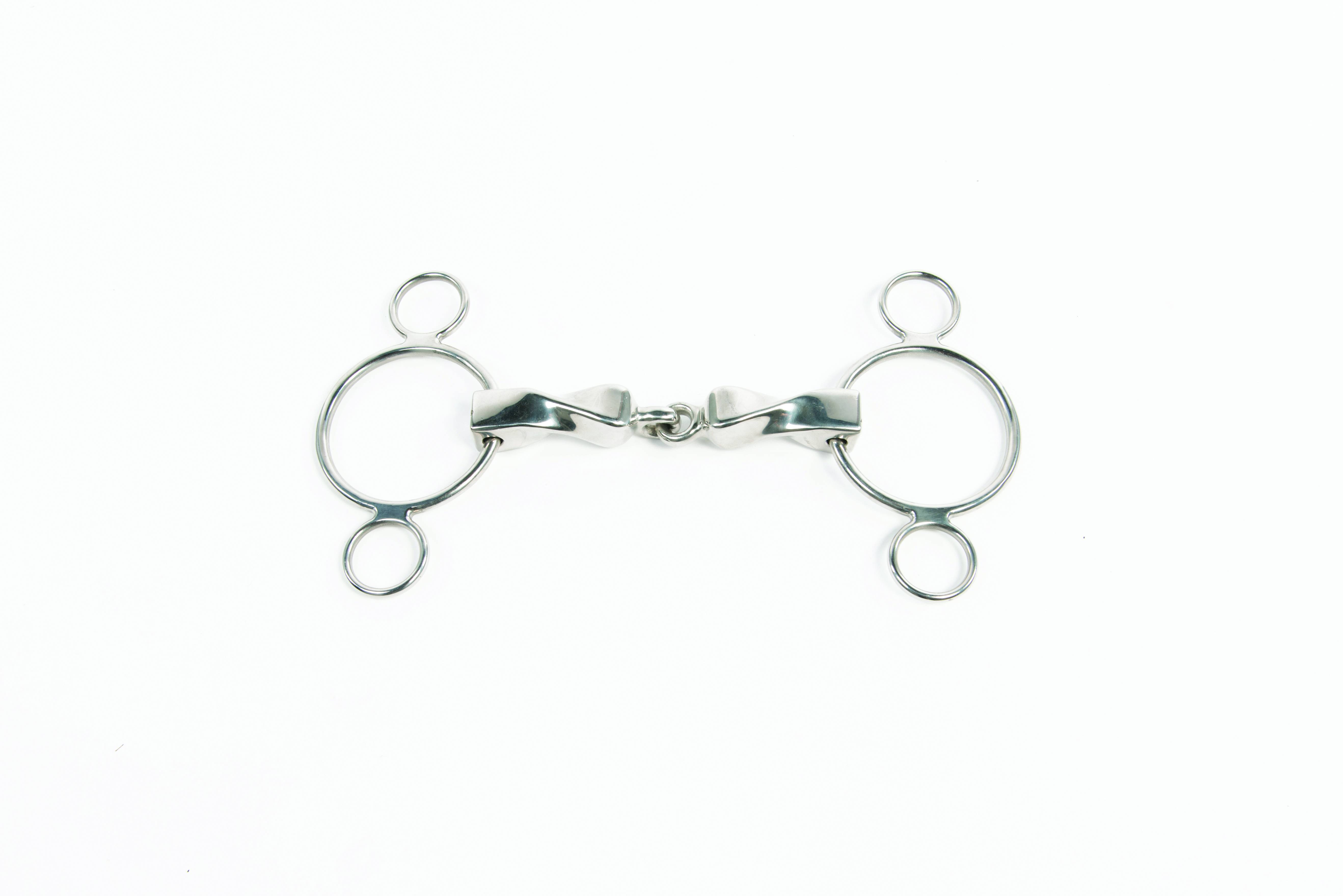

This reinforces the turning aids and providing the mouthpiece is the correct size (snug fit) will not allow the mouthpiece to slide back and forth across the tongue and bars thus reducing friction. It may be used in conjunction with any noseband but is not legal in a dressage test. The benefits were immediate and it in time eradicated this long term tongue habit. He was overactive in the mouth and constantly getting his tongue over the top of the bit. I discovered the benefits of this many years ago with a Warmblood I had in for schooling. The racehorses wear this in order to reduce the risk of the horse getting its tongue over the top of the mouthpiece. It is generally made of rubber and it attaches to the headpiece, running down the centre of the face then divides in order to support the cheeks of the bit. The Australian Cheeker is often seen on racehorses. Obviously when the bit is suspended in the mouth, the pressure is reduced across the floor of the mouth, tongue etc. If you wish to lift the bit in the horse's mouth a comfortable way of achieving this is by employing an Australian Cheeker. When a contact is taken the upper arms tilt forwards causing poll pressure and suspending the bit in the mouth - not only useful for promoting an outline but very beneficial for sensitive mouths as the pressure within the mouth is alleviated.The Baucher at rest - the cheeks are always attached to the small ring and the reins to the one main bit ring.The legal limit for the length of the baucher/hanging cheek snaffle is 12 cm - this is from top to bottom - not just the upper arm. This cheek is dressage legal as a Snaffle (on its own) or as a Bradoon used in conjunction with a Weymouth. However, if the horse is going forward into a contact and active behind this will encourage a rounding action and help tremendously with the outline. Any extension above the mouthpiece causes poll pressure - this in itself has a head lowering action. When a contact is taken the upper arm is angled forwards causing the mouthpiece to lift - thereby suspending it in the mouth and reducing the pressure across the tongue and the bars - this is often beneficial for cases of over sensitivity. Everything remains more still in the mouth and if a horse is lacking in the confidence to stretch into the contact, this may prove extremely beneficial. A quality loose ring correctly fitted should not cause any nips or rubs. It allows the mouthpiece more movement so that it may follow the angle of the tongue because the angle of the poll and the horse's overall outline changes through different work etc. It discourages fixing, blocking and leaning and encourages mouthing. The most popular - the loose ring has much more movement and play than a fixed butt or cheek. You are viewing: Home » Articles » The Bits and their Action: Cheeks, Mouthpieces, Doubles The Bits and their Action: Cheeks, Mouthpieces, Doubles Cheeks The Action of the Loose Ring BD Approved Tack for British Dressage Competitions.Sprenger: Find the Right Bit in Four Easy Steps.

Neue Schule - Bit Research and Development.Neue Schule - How New Bit Designs Evolve.
#TYPES OF GAG BITS HOW TO#


 0 kommentar(er)
0 kommentar(er)
